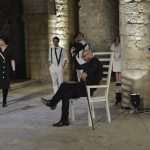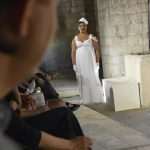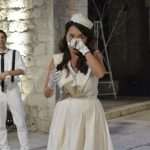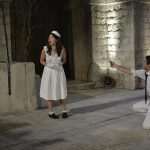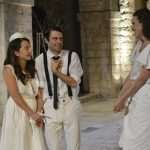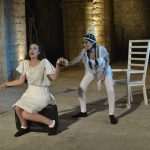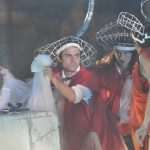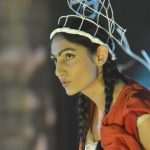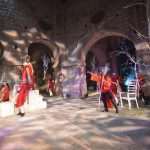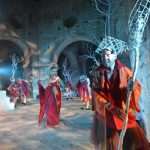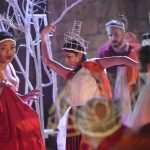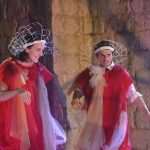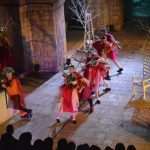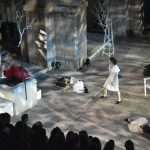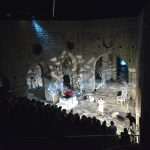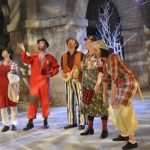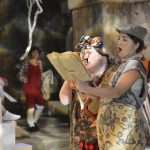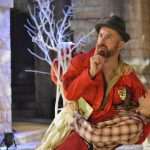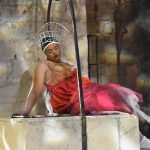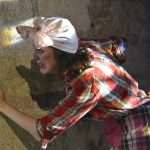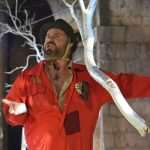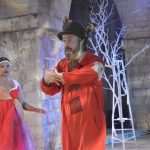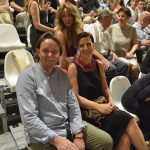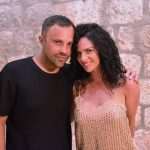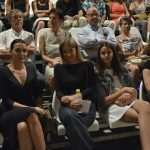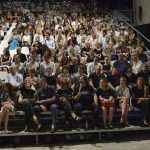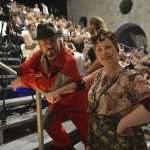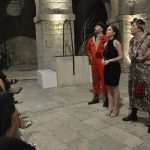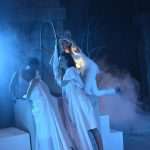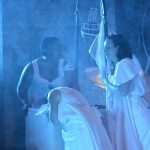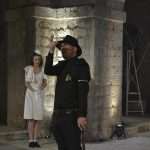Shakespeare’s magical comedy of mistaken, confused and enchanted identities, ‘A Midsummer Night’s Dream’, comes back to Dubrovnik where it shall be performed at Fort Lovrjenac, the most famous open air venue in this part of Europe, from the 24th June to 5th July at 9.30 pm.
The brand new production specially designed for Midsummer Scene Festival dives into the world of Faery where the stark world of Athenian court dissolves into a mad lovers’ chase.
A Midsummer Night’s Dream is a classic Shakespearean comedy focusing on themes of love, passion, magic, mistaken identity and even theatre itself. It is one of the most widely performed plays from the Bard’s back catalogue.
Taking the 1930s as its starting point, this production will also feature Bollywood-style choreography.
The British cast, directed by Helen Tennison, is supported by an international creative team, and Tenniosn wrote about the play:
The course of true love never did run smooth
—Lysander I. 136
A Midsummer Nights Dream is an intoxicating party of a play, probably written as a bridal masque. In this light, the illicit adventures of lovers in the woods can be read as a final rebellion before commitment. I was interested in focusing on how our lovelorn characters have important lessons to learn. In order to enjoy love, they must not only overcome external obstacles, but they must also confront their internal fears. And it’s never easy to face our flaws! Helena’s love seems to lead directly to a loss of self-respect, we recognize it, laugh at it, and love her for it.
Love lookes not with the eyes, but with the minde,
And therefore is wing’d Cupid painted blinde.
—Helena I. 238,239.
The play features numerous references to the way we ‘see’. We view our beloved as an example of godlike perfection. Puck fetches a flower that can emulate this effect, creating Titania’s passionate love for Bottom – despite the fact that he truly is, an ass. Bryony J Thompson and I plan to work these motifs into our production through her costume designs, with eye coverings and an explosion of colour as we enter the woods. When we love, we see the world in vibrant technicolour. But love can also colour our interpretation of events so that we see insult where there is none, viewing the world through a distorted and corrupting lens. Oberon’s jealousy and subsequent row with Titania is so vicious that it unbalances the natural world.
Therefore the Moone (the governesse of floods)
Pale in her anger, washes all the aire;
That Rheumaticke diseases doe abound.
And through this distemperature, we see
The seasons alter;
—Titania II. 102-106
Shakespeare continually references the moon in this play. Reminding us that the action takes place under cover of night and the romantic light of the moon. The moonlit, fairy world is joyfully free of the restrictive morality of Athens. Here, all our lusts, grief’s and selfish passions are indulged. Perhaps the fairies are simply the repressed side of the human characters? The humans returning to Athens, and marriage, are clearly happier and more settled for letting their fairy side out to play.
The final words of the evening go to Puck. Puck, I interpret as the random factor, the unknowable and uncontrollable sneaking into the human world just to meddle. And after all, without a little mischievous magic, would love ever flourish?
Lord, what fooles these mortals be!
—Puck III. 315



